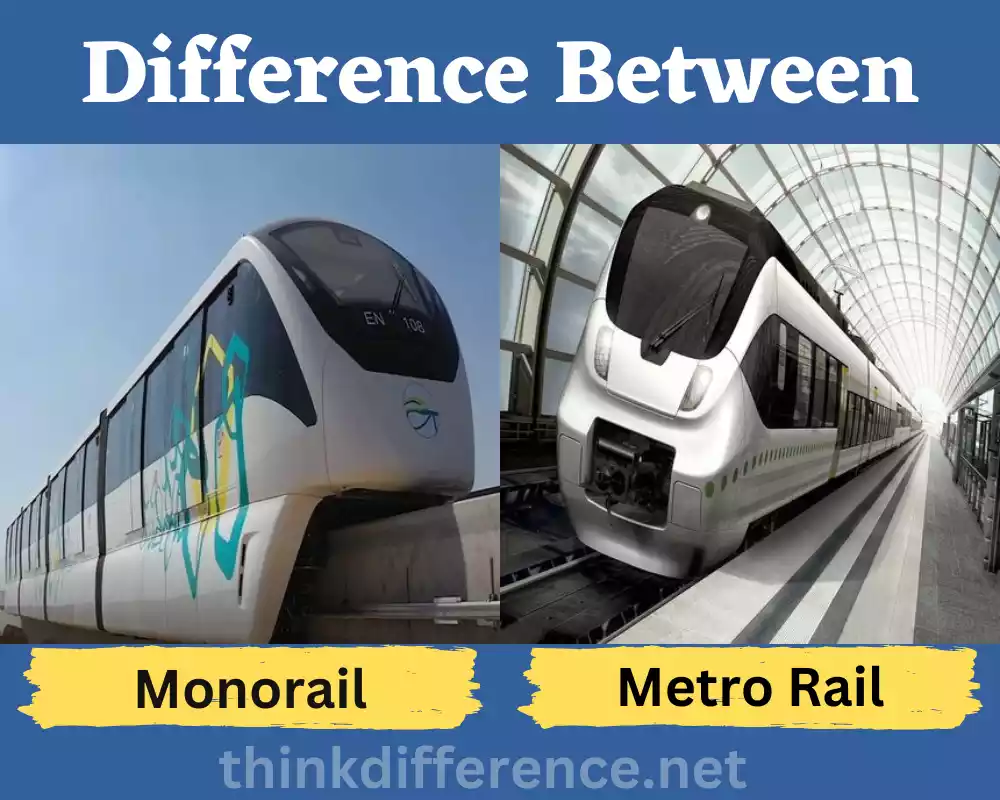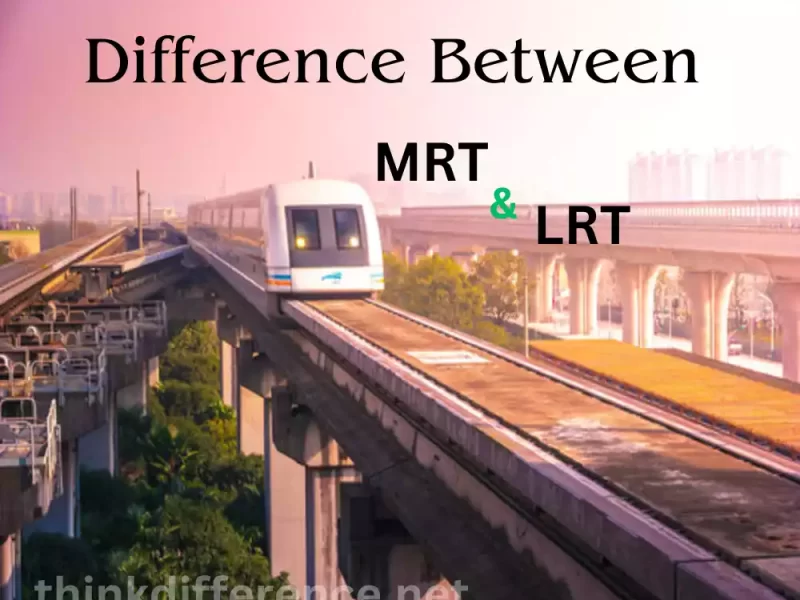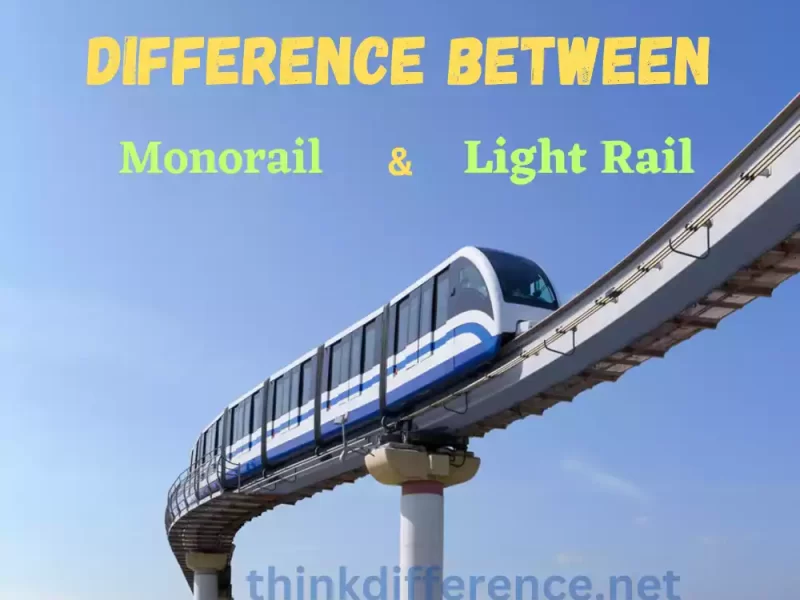Monorail and Metro Rail have emerged as popular choices for efficiently moving people in cities. Both modes of transport offer distinct advantages and cater to different needs. This article aims to delve into the characteristics, benefits and drawbacks of monorails and metro rails, providing readers with valuable insights to understand their differences and make informed decisions.
Definition of Monorail and Metro Rail
Monorail is a mode of transportation that utilizes a single rail track system for both support and guidance. It is typically elevated, with the track structure supported by columns or beams. Monorails can be either straddle-type, where the train straddles the rail or suspended-type, where the train hangs beneath the rail. Some monorail systems also employ magnetic levitation (maglev) technology, which uses magnetic forces to suspend and propel the train without physical contact with the track.
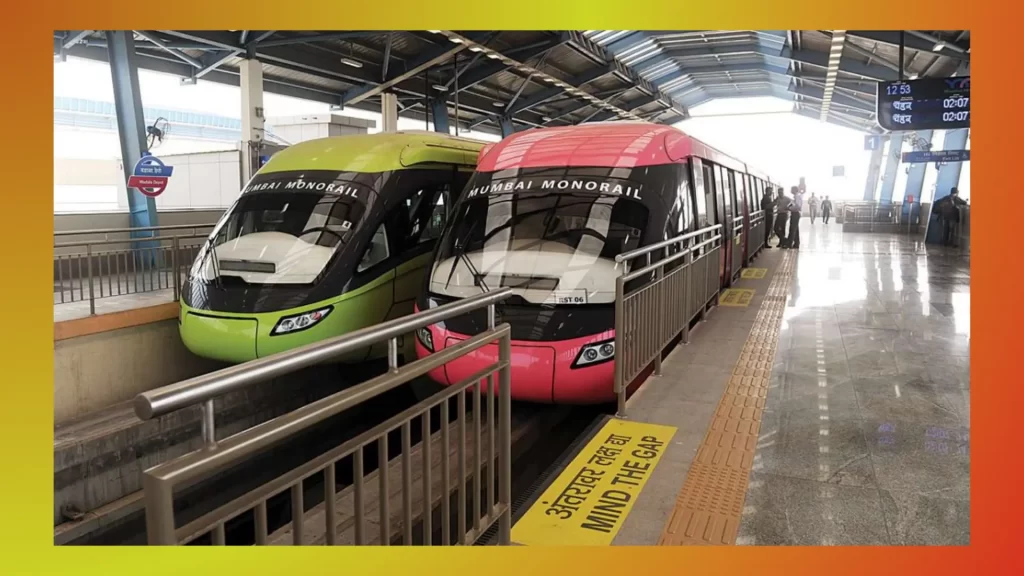
Metro rail (commonly referred to as underground or subway rail) is an efficient rapid transportation system which operates along dedicated tracks either underground or elevated. It consists of multiple parallel tracks, usually with electric-powered trains that run on steel rails. Metro rail systems were originally constructed to serve densely-populated urban regions with stations located regularly along their routes.
The trains often operate in tunnels below the ground in urban areas and transition to elevated tracks in suburban areas. The power for metro rail trains is usually supplied through a third rail or overhead catenary system.
Technology and Infrastructure
Technology and Infrastructure of Monorail:
- Guideway Structure: Monorails typically have an elevated guideway structure, supported by columns or beams. This elevated design allows monorails to be built above existing infrastructure, reducing land acquisition and minimizing disruption to traffic.
- Single Rail: Monorails operate on a single rail track, which can be positioned either above or beside the train. This single rail serves as both the support and guidance for the trains. The design allows for a narrower footprint compared to traditional rail systems.
-
- Monorail Technologies: There are different types of monorail technologies:
- Straddle-type: The train straddles the monorail track, with the wheels located on either side of the rail.
- Suspended-type: The train hangs beneath the monorail track, with the wheels positioned below the rail.
- Maglev: Some monorail systems employ magnetic levitation technology, where the train is propelled and suspended using magnetic forces without physical contact with the track.
Technology and Infrastructure of Metro Rail:
- Track System: Metro rail systems consist of multiple parallel tracks, allowing for separate lines and routes. The tracks can be either underground or elevated, depending on the specific system and the urban environment it serves.
- Station Design: Metro rail systems have stations located at regular intervals along the track. Stations are equipped with platforms, ticketing facilities and other amenities for passenger convenience. Underground stations often involve the construction of large underground spaces and access points for passenger entry and exit.
- Power Source: Metro rail trains are typically powered by electricity. The power is supplied through either a third rail or an overhead catenary system. The third rail carries the electrical current, while the catenary system uses overhead wires to provide power to the trains.
- Signaling and Control Systems: Metro rail systems utilize advanced signaling and control systems to ensure safe and efficient train operations. These systems include automated train control, train-to-wayside communication and sophisticated signaling technologies to maintain appropriate spacing and regulate train speeds.
- Tunneling and Elevated Structures: In urban areas, metro rail systems often require the construction of tunnels for underground sections and elevated structures for above-ground sections. Tunneling involves excavation and reinforcement techniques, while elevated structures require the construction of support columns and beams.
Both monorail and metro rail systems incorporate various technologies and infrastructure elements to provide efficient and reliable transportation services. The specific technology and infrastructure choices may vary depending on the system’s design, requirements and available resources.
Capacity and Passenger Experience
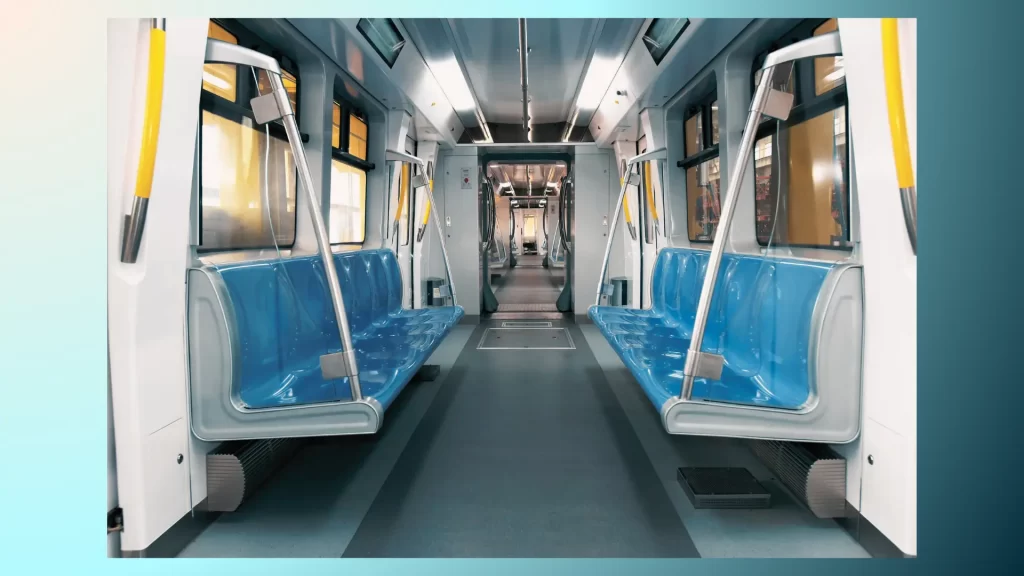
Capacity and Passenger Experience in Monorail:
- Capacity: Monorail systems typically have a lower capacity compared to metro rail systems. Monorail trains are generally smaller and have fewer cars, resulting in a limited seating and standing capacity. This can lead to potential crowding during peak hours or high-demand periods.
- Passenger Experience: Monorail systems often prioritize passenger experience and comfort. Features such as air conditioning, comfortable seating, and large windows for panoramic views are commonly incorporated into monorail train designs. Monorail stations are constructed to make travelling on them as convenient and effortless as possible for passengers, including providing elevators, escalators and ramps for them to use.
- Speed: Monorails typically operate between 30-50mph (48 or 80km/h). While not as fast as some metro rail systems, monorails still offer relatively efficient travel times for shorter to medium-distance journeys.
Capacity and Passenger Experience in Metro Rail:
- Capacity: Metro rail systems are designed to handle high passenger volumes. The trains are longer and can accommodate more passengers compared to monorails. Metro rail systems have multiple cars and during peak hours, trains are scheduled at shorter intervals to accommodate the demand. This allows for a higher capacity and reduced crowding.
- Passenger Experience: Metro rail systems prioritize efficient passenger movement. Stations are designed with multiple entrances and exits, allowing for smooth flow of passengers. Facilities such as platform screen doors, passenger information systems and clear signage are often implemented to enhance the passenger experience. Seating availability may vary, but standing space is typically provided to accommodate high passenger volumes.
- Speed: Metro rail systems are designed for efficient and rapid transit. Monorails generally travel at 50 mph (80 kilometers/h) or faster. The higher speeds enable faster travel times, especially for longer-distance journeys.
While monorails offer a comfortable passenger experience and can serve as an attractive transportation option for specific areas, metro rail systems generally provide higher capacities and faster transit speeds, making them better suited for densely populated urban areas with heavy passenger demand.
Speed and Efficiency
Speed and Efficiency in Monorail:
- Speed: Monorails operate at relatively moderate speeds compared to other forms of rapid transportation, though their speeds depend on your specific system and technology used. They usually travel at between 30-50 mph (48-80km/h); maglev monorails may reach over 300 miles an hour (480 kilometers per hour).
- Efficiency: Monorail systems have long been revered for their energy usage efficiency and environmental footprint reduction potential. Electric monorails emit lower carbon emissions than their fuel counterparts. Their elevated track design facilitates seamless movement for people and vehicles beneath it reducing congestion on surface tracks.
- Dedicated Right-of-Way: Monorails typically operate with their own designated right-of-way, that is separate trains run on their own tracks without directly impacting traffic flow or delay caused by vehicles. This gives monorails more predictable travel time since there won’t be as much congestion and vehicle delays to contend with when traversing an urban environment.
Speed and Efficiency in Metro Rail:
- Speed: Metro rail systems are designed for efficient and rapid transit. They can operate at relatively high speeds, especially on dedicated tracks. Metro trains may travel at speeds approaching 50 times the speed of sound (80 kilometers/hour), depending on their system configuration and specific sections of track.
- Efficiency: Metro rail systems are known for their efficiency in moving large volumes of passengers. With multiple cars and high-capacity trains, metro rail systems can transport a significant number of passengers simultaneously, reducing the reliance on individual vehicles and minimizing traffic congestion.
- Advanced Signaling Systems: Metro rail systems employ advanced signaling and control systems to optimize train movements and maintain efficient operations. These systems ensure safe and efficient spacing between trains, minimizing delays and maximizing the overall system capacity.
- Integration with Urban Planning: Metro rail systems often integrate with urban planning strategies, providing efficient transportation solutions for densely populated areas. By connecting major hubs, metro rail networks can facilitate easy access to commercial, residential and cultural centers, reducing reliance on private vehicles and promoting sustainable transportation options.
Monorail and metro rail systems aim to offer efficient transport solutions but their speed and efficiency depend upon factors including construction technology and operational procedures of each of the systems.
Environmental Impact
Environmental Impact of Monorail:
- Reduced Air Pollution: Monorail systems tend to use electric power instead of traditional fuel-powered vehicles, reducing pollution levels in urban environments by using less carbon dioxide emissions and improving air quality. By taking this step you will help decrease air pollution as well as improve quality.
- Noise Reduction: Monorails have long been recognized for being much quieter than traffic on roads when operating at elevated tracks, thanks to electric energy and its lack of engine noise creating an environment which is both peaceful and relaxing for both local residents and passengers.
- Land Utilization Efficiency: Monorail systems typically occupy less land compared to other forms of transport, thanks to their elevated design that permits construction above existing infrastructure or along existing roads, thereby decreasing land acquisition needs and decreasing massive development projects.
- Reduce Traffic Congestion: Monorails operate on separate tracks with separate rights-of-ways and therefore do not face traffic congestion issues like other modes of transit do. By decreasing vehicle numbers on roads, monorails create less congestion while simultaneously improving flow efficiency of traffic flow.
Environmental Impact of Metro Rail:
- Reduced Emissions: Metro rail systems primarily use electric power, resulting in lower greenhouse gas emissions compared to individual vehicles or diesel-powered public transportation options. Improved air quality and reduced carbon emissions result in urban areas.
- Noise Mitigation: Metro rail systems typically employ noise-reducers such as sound barriers or noise dampening techniques in order to limit train noise emissions. Underground sections of metro rail systems also provide noise insulation to surrounding areas.
- Land Conservation: Metro rail systems utilize existing urban space efficiently by operating underground or on elevated tracks. This reduces the need for extensive land acquisition and minimizes disruption to surrounding natural habitats. Preserving open spaces and minimizing land development can contribute to biodiversity conservation.
- Congestion Relief: By providing a high-capacity transportation option, metro rail systems help alleviate traffic congestion. By opting for public transit like metro trains instead of cars on the roads, we reduce traffic congestion while shortening travel time and improving flow efficiency.
Understanding that metrorail and monorail rail systems’ effects on the environment will depend upon their energy sources as well as operational practices, sustainable urban plans integration and additional measures such as sustainable energies, waste reduction or energy efficient practices will further increase sustainability is of vital importance for sustainable rail projects.
Cost and Feasibility
Cost and feasibility considerations for Monorail:
- Construction Costs: When building a monorail structure, construction costs can depend on several variables such as its length and type (e.g. Straddle or suspended maglev technology) as well as how complex its design may be. Monorails often require special structures and support columns which increase construction costs relative to traditional railways systems.
- Land Acquisition: Monorail infrastructure construction typically requires elevated tracks, necessitating elevated tracks to be acquired as well as rights-of-way or land purchases to construct monorail infrastructure. Land acquisition costs could play an integral role in total project costs.
- System Capacity: Monorails typically offer lower passenger capacities compared to metro rail systems, which may limit their viability in urban environments with high passenger demand. Multiple monorail lines might need to be constructed in order to meet demand similar to what would be met by one metro line line.
- Maintenance and Operation Costs: Costs for Maintenance and Operations Monorail systems require substantial expenses for their operation and maintenance, which include track maintenance, train servicing costs, energy consumption and staffing expenses. All expenses should be assessed long term to ensure fiscal viability.
Cost and feasibility considerations for Metro Rail:
- Construction Costs: The construction costs of metro rail systems can be significant due to the extensive infrastructure required, including underground tunnels, elevated tracks, stations and associated facilities. Excavation, reinforcement and tunneling expenses can contribute to the overall project cost.
- Land Acquisition: Metro rail systems may require substantial land acquisition, especially for underground sections and station development. The cost and availability of suitable land in urban areas can affect the feasibility and cost of implementing a metro rail system.
- Passenger Demand and Capacity: Metro rail systems are designed to accommodate high passenger demand in densely populated areas. Viability of a metro railway system depends upon anticipated passenger numbers and demand enough to justify investment and ongoing operating expenses.
- Ongoing Operation and Maintenance Costs: Metro rail systems require regular maintenance, staffing, energy consumption, and infrastructure upkeep. Financial viability and long-term viability must consider ongoing operational expenses like train maintenance and upgrades as part of infrastructure planning decisions.
- Integration with Existing Infrastructure: The feasibility of implementing a metro rail system may also depend on the availability and compatibility of existing transportation infrastructure. Integration with other types of public transport – like buses and existing rail lines – will increase cost-efficiency and viability for Metro Rail development projects.
Cost and feasibility assessments for both monorail and metro rail systems should consider factors such as local demographics, urban development plans, transportation demand, funding sources and potential economic and social benefits to determine the viability of each option in a specific context.
Safety and Security
Safety and Security in Monorail:
- Dedicated Track: Monorails operate on a dedicated track, separate from road traffic. Reducing collision risks with vehicles that aren’t your own increases security overall.
- Elevated Structure: The elevated guideway structure of monorails provides a higher level of safety by minimizing the risk of accidents involving pedestrians or vehicles on the ground. It helps prevent unauthorized access to the track and reduces the potential for accidents or obstructions.
- Limited Intersections: Monorail systems have fewer intersections compared to road-based transportation systems, which reduces the likelihood of accidents caused by cross-traffic or conflicting movements.
- Emergency Preparedness: Monorail systems utilize emergency measures such as evacuation routes in case of emergencies, fire detection systems and evacuation plans to protect passengers in an event of an emergency situation.
- Surveillance and Monitoring: Monorail stations and trains often have surveillance systems, including CCTV cameras, to monitor passenger activity and ensure security. This can help deter criminal activities and provide evidence in case of incidents.
Safety and Security in Metro Rail:
- Controlled Access: Metro rail systems have controlled access points at stations, requiring passengers to go through security checkpoints or ticketing gates. This helps maintain a secure environment and prevents unauthorized access to the platforms.
- Emergency Communication Systems: Metro rail networks feature emergency communication systems such as intercoms or emergency call boxes that enable passengers to quickly contact staff during emergencies or security threats.
- CCTV Surveillance: Metro stations and trains are typically equipped with extensive CCTV surveillance systems to monitor passenger activity and detect suspicious behavior. These surveillance systems help enhance security and provide valuable evidence in the event of incidents.
- Security Personnel: Metro rail systems often employ security personnel, including station attendants and transit police, who are responsible for maintaining a safe environment, enforcing regulations and responding to security incidents or emergencies.
- Emergency Evacuation Procedures: Metro rail systems provide emergency evacuation procedures which include evacuation routes, exits and public address systems to provide help in times of power outage, fire or natural catastrophes.
Both monorail and metro rail systems prioritize the safety and security of passengers. They implement various measures, technologies and personnel to ensure a safe and secure travel environment. The specific safety and security protocols may vary depending on the system’s design, location and the regulations of the operating authority.
Flexibility and Future Expansion
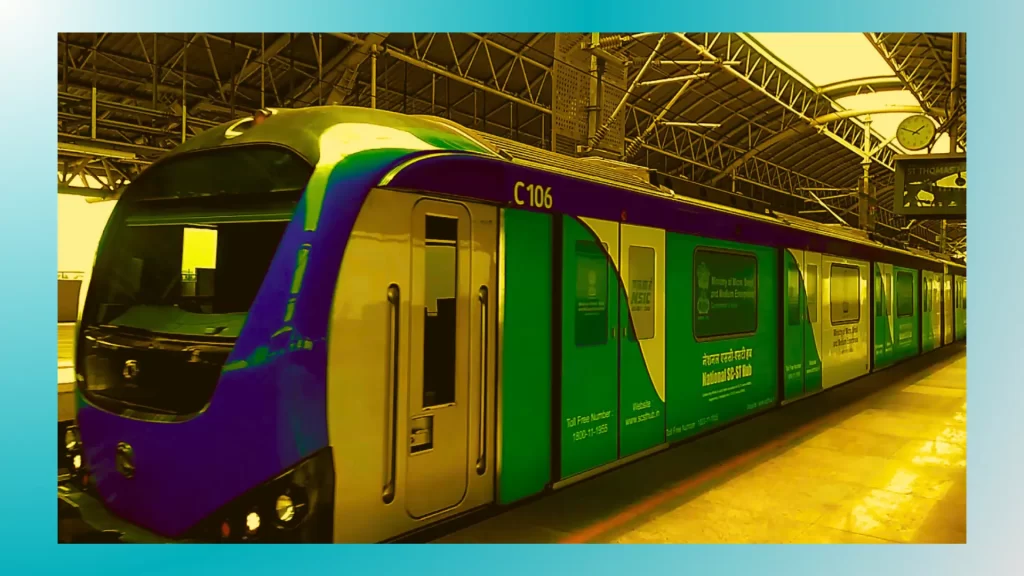
Flexibility and Future Expansion in Monorail:
- Modular Construction: Monorail systems often employ modular construction techniques, allowing for easier expansion or modification of the system in the future. Modular components can be added or removed as needed, facilitating system expansion or adjustment to changing transportation demands.
- Scalability: Monorail systems can be designed to accommodate future expansion by incorporating additional stations, longer trains or extending the existing track. This scalability allows for incremental growth of the system based on evolving passenger needs and urban development.
- Adaptive Technology: Monorail technologies are continually evolving, with advancements in areas such as propulsion systems, energy efficiency and automation. Future expansion can benefit from adopting new technologies that enhance performance, capacity and passenger experience.
- Interconnectivity: Monorail systems are created to fit into users’ minds seamlessly, providing easy integration with other forms of transportation. This enables passengers to transfer easily between different transit systems, promoting a more comprehensive and interconnected transportation network.
Flexibility and Future Expansion in Metro Rail:
- Extensive Track Network: Metro rail systems are often designed with a comprehensive track network, allowing for future expansion and the addition of new lines or extensions to existing lines. This flexibility enables the system to adapt to changing population patterns and urban development.
- Interchangeability: Metro rail systems are designed to facilitate easy interchangeability between lines and routes. This allows for efficient transfers and the ability to add new connections or branches to the existing network as transportation needs evolve.
- Station Design: Metro rail stations are typically constructed with future expansion in mind. Station designs can incorporate provisions for additional platforms, entrances or concourse areas, ensuring that the infrastructure can accommodate increased passenger volumes and future line expansions.
- Integrated Planning: Metro rail systems often integrate with urban planning strategies, considering future growth projections and transportation demands. This integrated approach allows for coordinated expansion plans that align with overall city development goals.
- Technology Upgrades: Metro rail systems can benefit from technological advancements, such as improved signaling systems, train control systems and energy-efficient technologies. Future expansions can leverage these advancements to enhance operational efficiency, capacity and passenger experience.
Both monorail and metro rail systems can be designed with flexibility and future expansion in mind. Modular construction, scalability, interconnectivity and the ability to adopt new technologies are key considerations for ensuring that these transportation systems can accommodate growth, evolving demands and advancements in the industry.
Integration with Existing Systems
Integration with Existing Systems in Monorail:
- Intermodal Connectivity: Monorail systems can be integrated with existing transportation modes such as bus networks, light rail systems or metro rail lines. This allows for seamless transfers and enhances the overall connectivity and accessibility of the transportation network.
- Shared Stations: Monorail stations can be strategically located near existing transportation hubs or major destinations, facilitating convenient transfers and improving intermodal connectivity. Shared stations can provide easy access for passengers transitioning between different modes of transportation.
- Fare Integration: Integration with existing fare systems allows passengers to use a single ticket or payment method for multiple modes of transportation. This simplifies the fare payment process and encourages the use of public transportation across different systems.
- Planning and Coordination: Effective integration requires coordination and collaboration among different transportation authorities or agencies. Integrated planning efforts can ensure that monorail systems align with existing infrastructure, land use plans and transportation policies.
Integration with Existing Systems in Metro Rail:
- Interchange Stations: Metro rail systems often have interchange stations where multiple lines converge, allowing passengers to transfer between different lines seamlessly. These stations are strategically located to enhance connectivity and provide convenient transfer points.
- Integrated Fare Systems: Metro rail systems can be integrated into existing fare systems, allowing passengers to use a single fare card or ticket for multiple modes of transportation. This simplifies the fare payment process and encourages the use of public transportation across different systems.
- Intermodal Transfer Facilities: Metro rail stations can be designed with integrated intermodal transfer facilities, such as bus terminals, taxi stands or bicycle-sharing stations. These facilities facilitate smooth transfers between different modes of transportation and enhance overall connectivity.
- Timetable and Scheduling Coordination: Integration requires coordination of timetables and schedules between different transportation modes. This ensures that transfer times are minimized, reducing waiting times for passengers transferring between metro rail and other modes of transportation.
- Information Sharing: Integration relies on effective information sharing among transportation agencies. Providing accurate and up-to-date information about schedules, route changes and service disruptions across different modes of transportation enhances the passenger experience and facilitates smooth intermodal transfers.
Effective integration with existing transportation systems requires collaboration, planning and coordination among various stakeholders, including transportation authorities, urban planners and infrastructure developers. By seamlessly connecting monorail or metro rail systems with other modes of transportation, passengers can enjoy a comprehensive and efficient transportation network.
Comparison table of Monorail and Metro Rail
Below is a table comparing metro and monorail rail systems:
| Aspect | Monorail | Metro Rail |
|---|---|---|
| Technology | Single rail or beam | Two parallel rails |
| Infrastructure | Specialized elevated structures and support | Underground, elevated, or at ground level |
| Capacity | Lower capacity | Higher capacity |
| Passenger Experience | Relatively smooth ride | Spacious trains, amenities provided |
| Speed | Relatively high speeds | High speeds on dedicated tracks |
| Environmental Impact | Smaller ecological footprint, electric-powered | Potential larger impact due to tunneling |
| Cost | Varies depending on technology and infrastructure | Higher construction costs, extensive infrastructure |
| Integration with Existing Systems | Can be integrated with other transportation modes | Interconnectivity with other transportation modes |
| Flexibility and Expansion | Modular construction, potential for expansion | Extensions and new lines can be added |
| Safety and Security | Implement safety measures and protocols | Emphasis on safety and security |
Case Studies
Case Study 1: Monorail – The Chongqing Rail Transit (CRT) Monorail System, China
Chongqing Rail Transit (CRT) Monorail System in Chongqing, China stands as one of the biggest and longest monorail systems globally. Conceived to address Chongqing’s increasing transportation demands and ease road congestion in this mountainous region.
Key Features and Benefits:
- Extensive Network: The CRT Monorail System spans over 98 miles (158 kilometers) and consists of multiple lines connecting various parts of Chongqing. It serves both urban and suburban areas, providing efficient transportation for millions of residents.
- Elevated Structure: Due to the challenging topography of Chongqing, the monorail system is primarily elevated, reducing the impact on the existing road network and preserving valuable land space. The elevated track design allows for seamless integration with the city’s urban fabric and minimizes disruptions on the ground.
- High Capacity and Efficiency: The CRT Monorail System features high-capacity trains that can accommodate a large number of passengers. The system operates at frequent intervals, ensuring convenient and efficient travel options for commuters. The monorail’s dedicated track reduces delays caused by road traffic congestion.
- Reduced Environmental Impact: As an electric-powered system, the CRT Monorail helps reduce carbon emissions and air pollution in Chongqing. The elevated track design minimizes the system’s ecological footprint and preserves the natural environment.
Case Study 2: Metro Rail – Tokyo Metro, Japan
Tokyo Metro, one of the most comprehensive metro rail systems that serve Japan’s Tokyo Metropolitan Area is among the world’s most well-known and extensive networks, connecting numerous cities, commercial districts and residential communities in and around Tokyo.
Key Features and Benefits:
- Extensive Coverage: Tokyo Metro consists of multiple lines covering a vast area of the metropolitan region. The network is designed to provide extensive coverage, allowing passengers to easily access key destinations and transfer between different lines.
- Integration with Other Modes of Transportation: Tokyo Metro is seamlessly integrated with other transportation modes, including suburban railways, buses, and even airports. Passengers can use a single fare card to travel across different transportation systems, promoting a convenient and interconnected travel experience.
- High Frequency and Capacity: Tokyo Metro operates with high-frequency train services, especially during peak hours, ensuring that passengers have frequent and reliable transportation options. The system’s high capacity trains can accommodate a large volume of commuters efficiently.
- Safety and Efficiency: Tokyo Metro has an excellent safety record, with well-maintained infrastructure, advanced signaling systems, and comprehensive emergency preparedness measures. The system’s efficient operations and reliability contribute to Tokyo’s reputation for punctuality and efficiency in public transportation.
- Integration with Urban Development: Tokyo Metro has played a crucial role in shaping urban development in Tokyo. Stations are often located near major commercial, cultural, and residential areas, supporting the growth and accessibility of these regions. Metro lines have become an integral component of Tokyo’s city planning strategies and contributes to its reputation as a liveable metropolis.
Both the Chongqing Rail Transit Monorail System and Tokyo Metro serve as successful case studies showcasing the effectiveness and benefits of monorail and metro rail systems in addressing transportation challenges in densely populated urban areas. These systems provide efficient and dependable transport options that enhance our cities by increasing connectivity, decreasing congestion and improving living conditions for both commuters and residents.
Conclusion
Both Monorails and Metro rails offer valuable solutions to urban transportation challenges. Monorails boast futuristic designs and cost-effective infrastructure, making them attractive choices for certain cities. On the other hand, metro rails excel in their high passenger capacity and extensive networks, catering to the needs of densely populated metropolises. The choice between a monorail and a metro rail depends on the specific requirements and constraints of each city.

